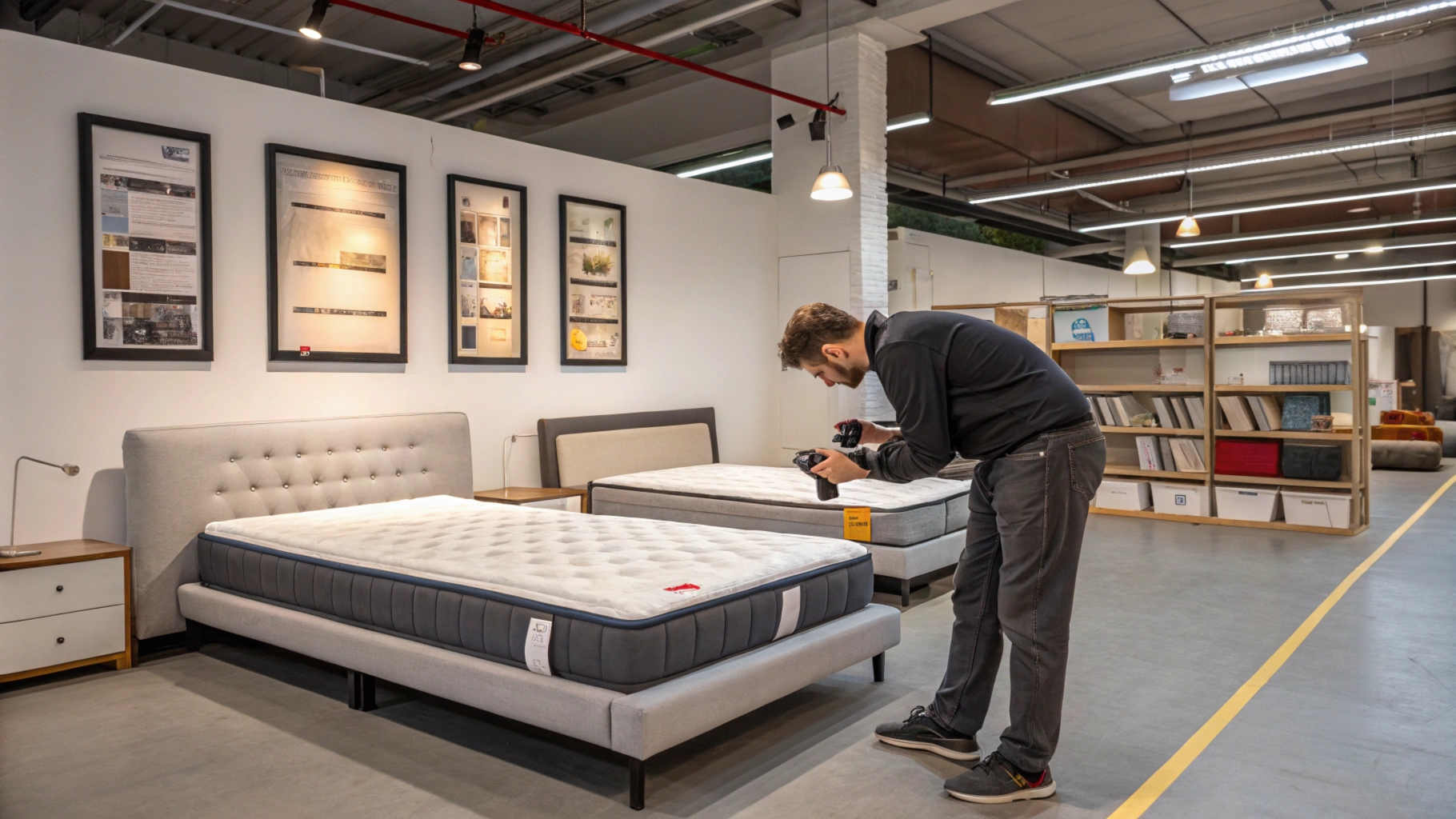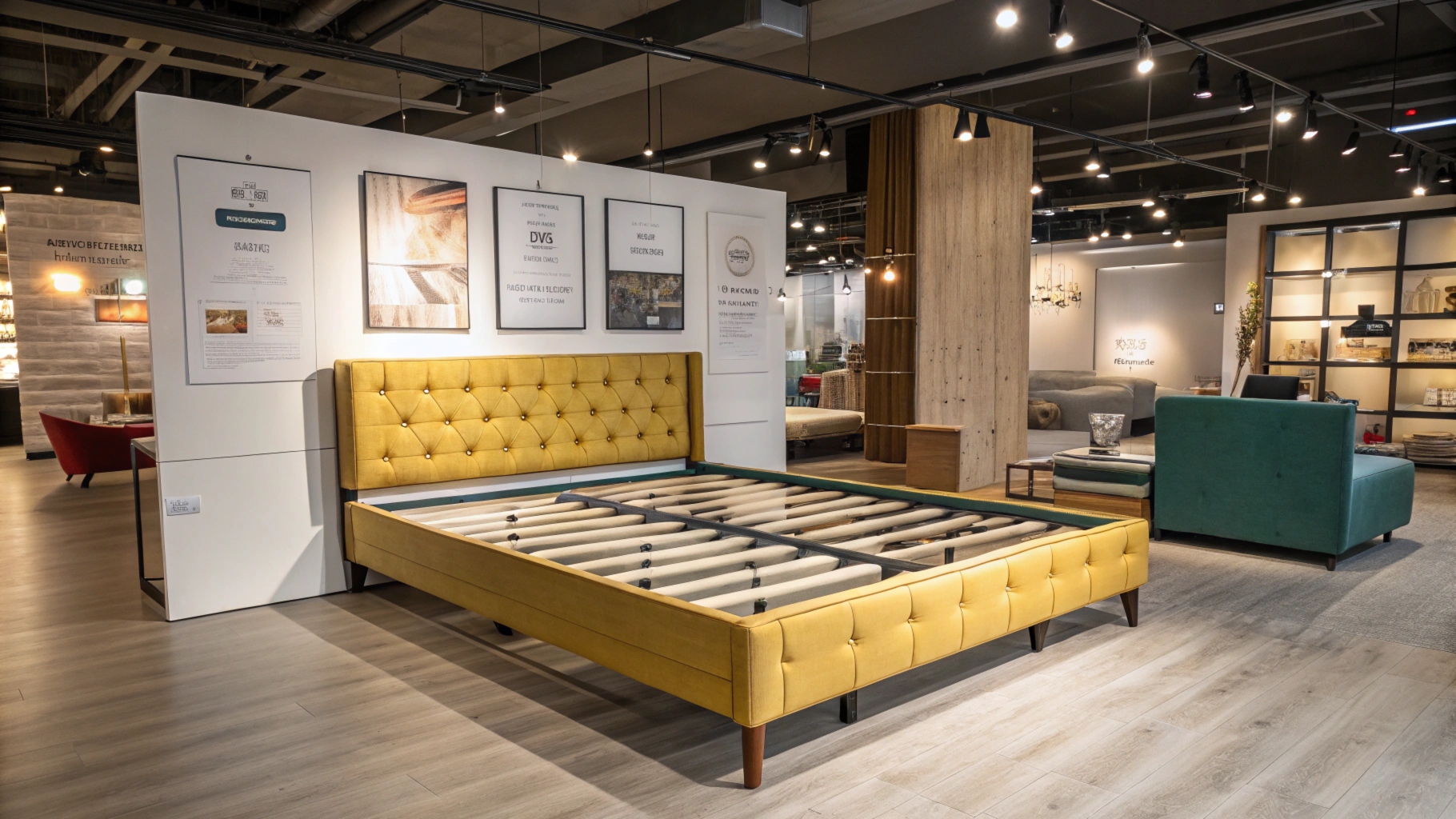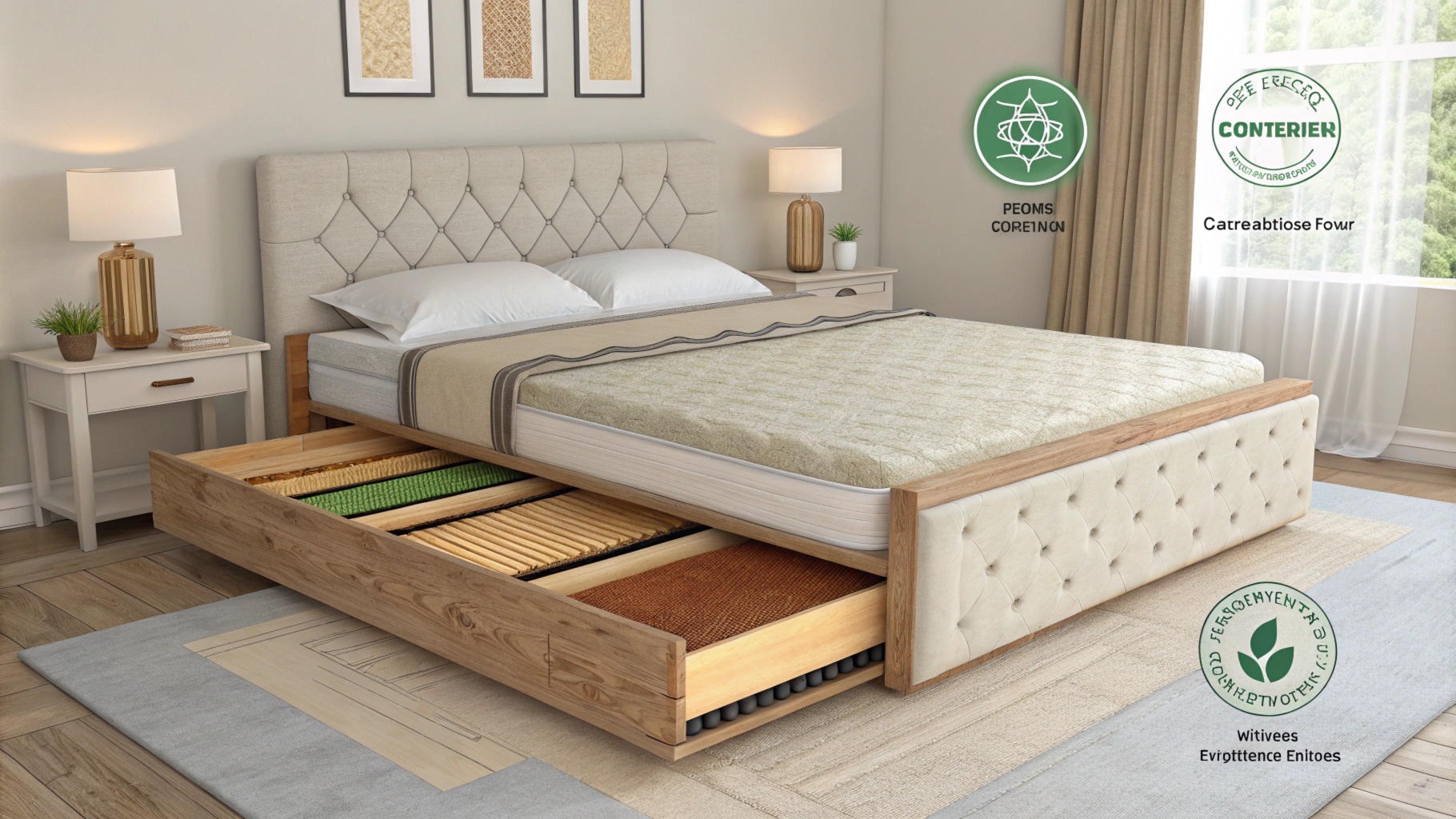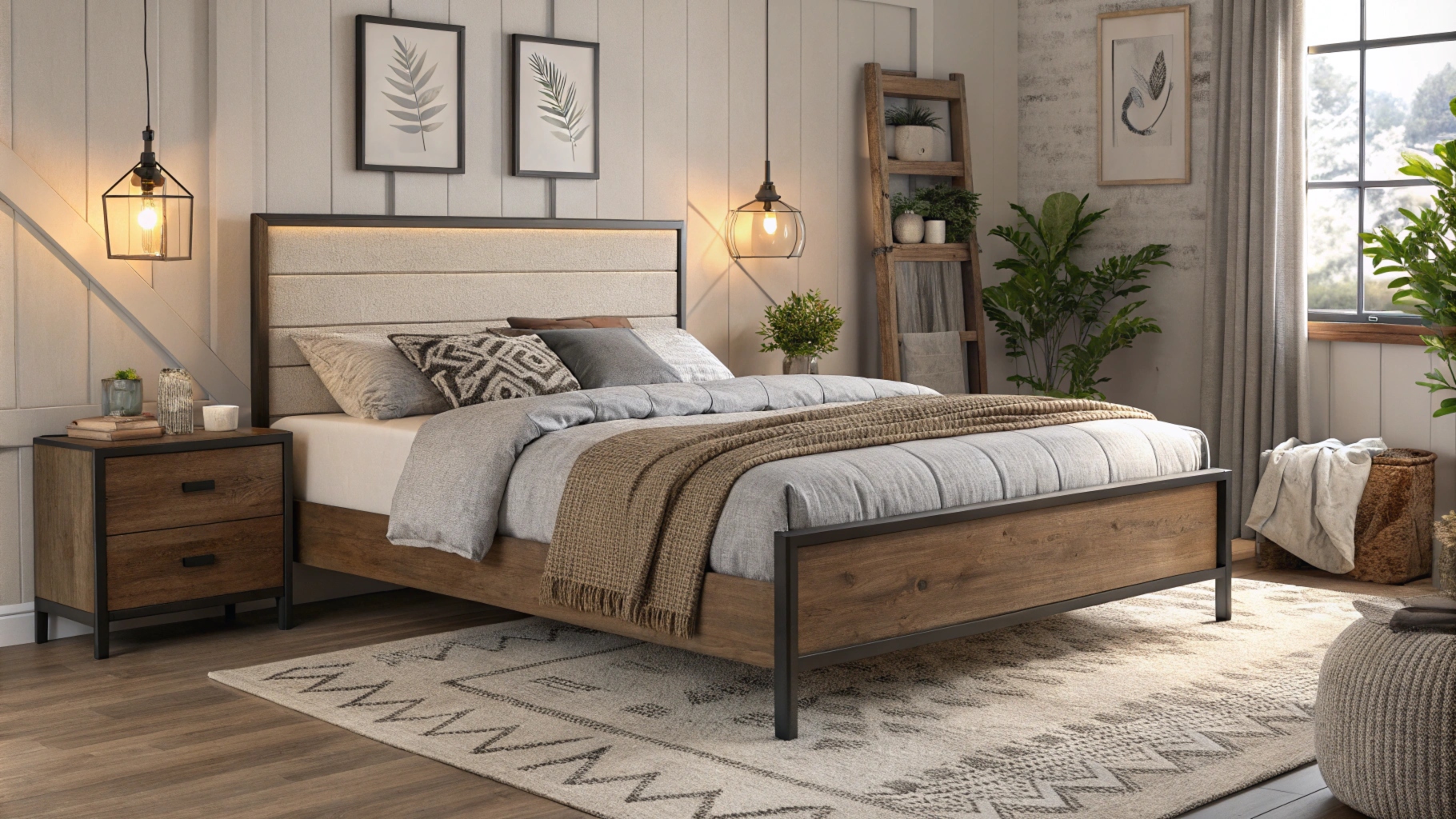
Opening paragraph: Choosing a reliable supplier for bed frames can feel overwhelming. With so many options, ensuring quality while balancing cost can be a challenge. A systematic approach can help.
Snippet paragraph: The key to verifying bed frame quality lies in evaluating materials, craftsmanship, durability tests, and certifications. Comparing samples from multiple suppliers can reveal differences.
Transition paragraph: Imagine this: You’ve just received a shipment of bed frames, but upon assembly, screws don’t fit and the frame wobbles. Avoiding this nightmare starts with rigorous quality verification.
How to Check Bed Frame Quality?
Opening paragraph: Not all bed frames are created equal. Quality checking ensures durability and customer satisfaction, preventing returns and complaints.
Snippet paragraph: Examine the materials, test the structure, and verify supplier certifications. Request samples and review customer feedback.

Dive Deeper: Steps to Ensure Quality
-
Inspect the Material:
High-quality bed frames are often made of solid wood or metal. Avoid particleboard for load-bearing parts as it weakens over time.Material Type Pros Cons Solid Wood Durable, aesthetic Higher cost Metal Strong, cost-effective May rust without care Particleboard Low cost Low durability -
Evaluate Craftsmanship:
Look for smooth edges, even finishes, and sturdy joints. A poorly assembled frame may indicate inconsistent manufacturing standards. -
Conduct Stability Tests:
Assemble the sample and apply pressure to test wobbling or creaking. These are indicators of weak joints or improper assembly design. -
Request Certifications:
Ensure the supplier complies with international safety and quality standards like ISO 9001 or FSC for sustainable wood. -
Check Packaging and Assembly Instructions:
Poor packaging can damage the product during transit. Clear instructions reduce customer frustration.
Does the Quality of a Bed Frame Matter?
Opening paragraph: A bed frame’s quality goes beyond aesthetics. It impacts user comfort, safety, and the product's lifecycle.
Snippet paragraph: High-quality bed frames enhance durability, customer trust, and brand reputation. Poor quality leads to negative reviews and returns.
Dive Deeper: Consequences of Low-Quality Bed Frames
-
Customer Dissatisfaction:
Faulty bed frames are more likely to break under normal use, leading to complaints. For instance, frames that creak loudly can disrupt sleep quality. -
Financial Implications:
Returns and warranty claims increase operational costs. Investing in quality upfront can reduce long-term expenses. -
Reputation Damage:
Wholesalers who deliver subpar products risk losing repeat business. Customer reviews play a critical role in e-commerce success. -
Practical Example:
One retailer shared a case where a batch of poorly welded metal frames led to a 30% return rate. This could have been avoided with pre-shipment inspections.
Do All Bed Frames Contain Formaldehyde?
Opening paragraph: Formaldehyde is a common concern in furniture manufacturing. Knowing what’s safe is essential for customer health and compliance with regulations.
Snippet paragraph: Not all bed frames contain formaldehyde, but certain materials like MDF and particleboard often do. Certifications help ensure safety.

Dive Deeper: Understanding Formaldehyde in Bed Frames
-
What is Formaldehyde?:
It’s a chemical used in adhesives for composite wood products. Long-term exposure can harm health, causing respiratory issues. -
Materials to Watch:
- MDF and particleboard often have higher formaldehyde levels.
- Solid wood and powder-coated metals are safer choices.
-
Testing and Standards:
Ask suppliers for compliance with standards like CARB Phase 2 or E1, which regulate emissions. A supplier refusing such documentation may not meet quality benchmarks. -
How to Ensure Safety:
- Request low-emission certifications.
- Verify if suppliers use non-toxic adhesives.
-
Case Study:
A furniture retailer in the US rejected a shipment of bed frames due to non-compliance with formaldehyde limits. This delayed their launch by three months.
What Type of Bed Frame is Most Durable?
Opening paragraph: Durability is a top concern for wholesalers. Knowing which materials and designs stand the test of time helps avoid frequent replacements.
Snippet paragraph: Metal and solid wood frames are generally the most durable. Design, joint type, and finishing also play crucial roles.

Dive Deeper: Factors Affecting Bed Frame Durability
-
Material Choice:
Solid hardwood like oak or ash lasts longer than softwoods. Metal frames with rust-resistant coatings also have a high lifespan. -
Design Matters:
- Platform beds offer better support and longevity compared to slatted designs with thin boards.
- Welded joints outperform screw-based assemblies for strength.
-
Protective Coatings:
Frames with powder-coated finishes resist rust and scratches. Varnished wood provides additional protection against moisture. -
Testing Durability:
- Load tests simulate real-life usage.
- Request supplier videos demonstrating the product under stress.
-
Comparison Chart:
Frame Type Lifespan Maintenance Required Cost Range Solid Wood 10-20 years Low $$$ Metal 15-25 years Medium $$ Particleboard/MDF 5-10 years High $
Conclusion
Ensuring the quality of bed frames involves evaluating materials, testing craftsmanship, and verifying certifications. Durable frames enhance satisfaction and long-term profitability.



